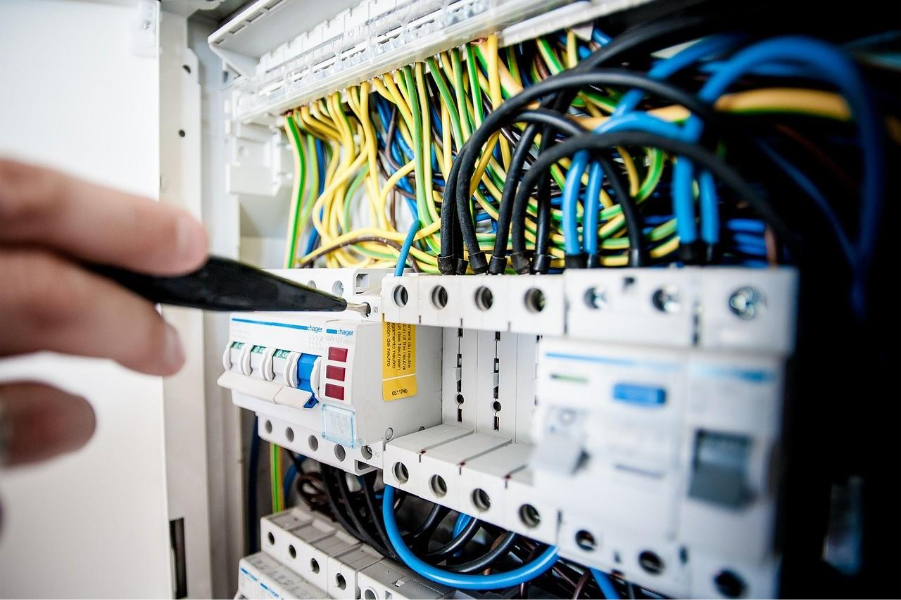Low-voltage wiring may not carry the same risks as standard electrical wiring, but that doesn’t mean you can ignore it. These cables power everything from home security systems and landscape lighting to smart home devices. If left unprotected, they can fail, degrade or even create hazards. Read on to learn how to protect low-voltage wiring to keep your systems reliable and safe.
Why is protecting low-voltage wiring so important?
Although low-voltage wiring has minimal risk of electric shock, it is far more vulnerable to external threats that can impact performance and reliability. Unprotected cables are highly susceptible to electromagnetic interference (EMI), which can corrupt signals, leading to degraded performance in communication, data and automation systems. This interference may also cause indirect hazards such as false alarms in security systems or malfunctions in smoke detectors.
Additionally, physical damage, moisture and heat can shorten the lifespan of both wiring and connected equipment, leading to costly repairs or replacements. Proper low-voltage wiring protection preserves data integrity, ensures system reliability and extends the longevity of equipment.
What are the biggest threats to low-voltage wiring?
Low-voltage wiring is more delicate than standard electrical wiring. Common threats that can impact performance and reliability include:
- Physical damage: Pets and pests, such as rodents and mice, can chew on exposed wires, while people can accidentally cut or crush them when moving furniture, renovating or mowing (for landscape lighting cables).
- Moisture and corrosion: Outdoor cables exposed to rain, snow or condensation may corrode, leading to weak or inconsistent signals.
- UV degradation: Prolonged exposure to sunlight can cause the breakdown of cable insulation, rendering it brittle and prone to cracking.
- Electromagnetic interference (EMI): Running low-voltage cables too close to high-voltage electrical wiring can cause interference, especially in audio/video and data systems.
The experienced electrical contractors are aware of these risks and employ effective low-voltage wiring protection methods to mitigate them.
How can I protect low-voltage wiring outdoors?
Outdoor wiring installation encounters the harshest conditions. Do the following for electrical safety:
- Use direct burial-rated cables: These are designed to resist moisture and soil acidity. You can place them directly in the ground without the need for additional sheathing.
- Bury cables at the correct depth: Place your cables in a trench at least 6–12 inches deep. This will protect them against accidental cuts from gardening tools or lawn equipment.
- Install conduit for extra durability: Run your wires through PVC or flexible conduit to shield them from crushing, water exposure and animal interference.
- Seal entry points: Use grommets or sealant where cables enter a building to prevent water and pest intrusion.
What are the best practices for indoor protection?
Within a home, low-voltage wiring protection focuses on preventing wear and tear and maintaining signal quality. Some recommended best practices for indoor protection:
- Use conduit or raceways in high-traffic areas: This will prevent wires from being pinched, stepped on or snagged.
- Separate low-voltage wiring from high-voltage lines: Keep them at least 12 inches apart to minimize EMI and ensure signal integrity.
- Label and organize cables: Structured cabling with labels prevents confusion during upgrades or repairs.
- Install surge protection: Even low-voltage systems benefit from surge protectors, especially for home theaters, security systems and networking equipment.
A careful wiring installation indoors ensures that devices operate smoothly and wiring stays intact for years.
Does smart home technology change how I protect my wiring?
Yes. Smart homes require durable, well-organized low-voltage wiring protection methods to maintain consistent performance and long-term reliability. Devices such as cameras, sensors, smart lighting and thermostats all depend on stable data and power connections. Poor low-voltage wiring installation can lead to weak signals, device malfunctions or complete system downtime.
To prevent these issues, use high-quality shielded cables for data lines and keep them separate from high-voltage electrical wiring to minimize interference. Additionally, surge protection should be installed to guard against power fluctuations. Remember to run conduit or pull strings during construction to make future upgrades much easier.
Conclusion
While low-voltage systems may not present the same hazards as high-voltage electrical wiring, a lack of wire protection can lead to performance issues, costly repairs and reduced system lifespan. Adequate low-voltage wiring protection safeguards reliability, preserves equipment and ensures long-term efficiency.
That’s why it’s critical to work with the experienced electrical contractors such as Winward Electrical Services. Professional electrical contractors understand proper wiring installation practices and proven protection methods.
